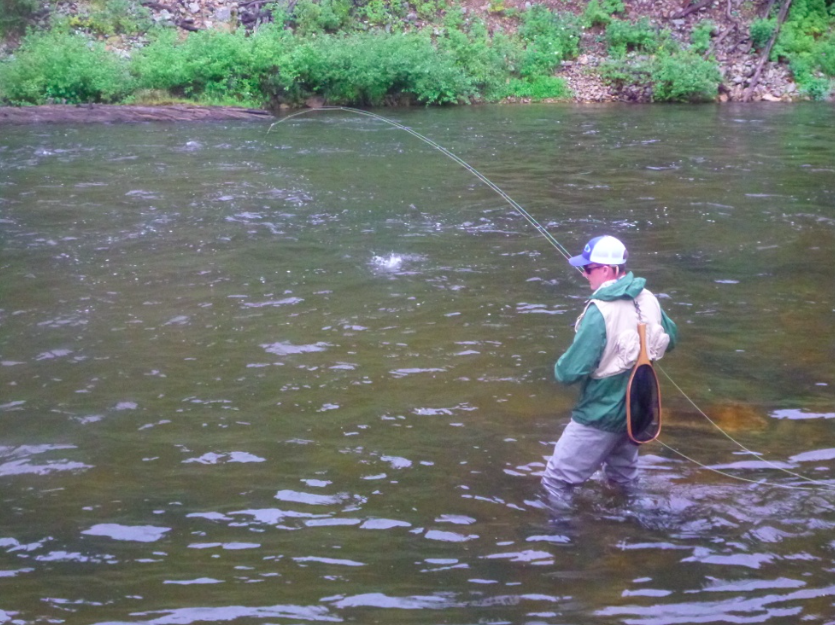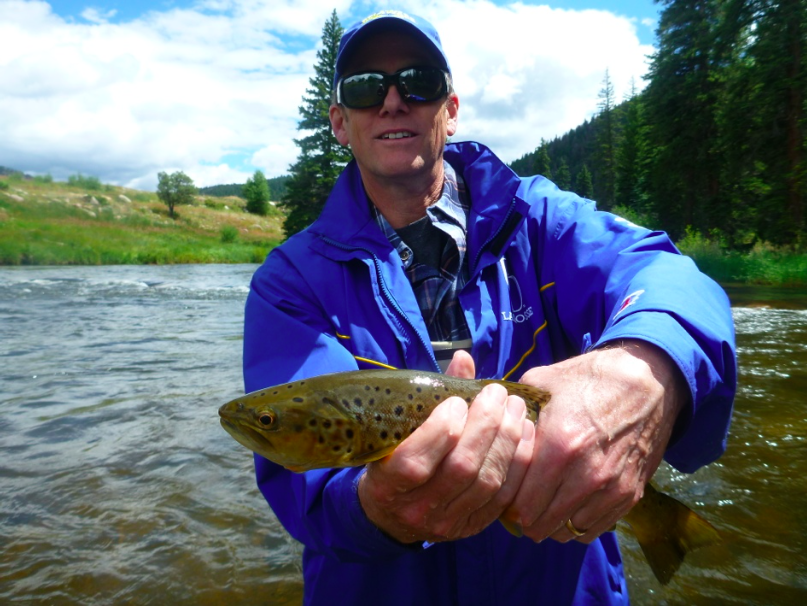An updated Taylor River Fly-Fishing Report written by Wilder’s Master Fly-Fishing Guide, Lu Warner.
So far August has provided excellent fishing on the Taylor River. Flows at Wilder have remained about 30% above the 100 year average at approximately 485 CFS, with a drop of 50 CFS forecast to occur in the next few days. Despite the high water, the dry fly fishing has been phenomenal as hatches have occurred almost every day between noon and three p.m. Cloudy days have the strongest hatches and on peak days, the hatch can last from noon until 4:30 pm. River temperatures are about 52 degrees in the mornings and warm up slightly to reach the mid – fifties on warm afternoons.
As usual, as the season progresses, the bugs get smaller and the fish more selective. We are still seeing a few Green Drakes but most insect activity is coming from PMD ‘s and BWO’s. The PMD’s are a size 16 and the BWO’s are smaller and average about a size 20. The BWO’s will become more important as we approach Fall and anglers should come well stocked with some different BWO patterns including emergers, dries and nymphs.
Caddis are still a factor, particularly the pupae, however the prolific hatches of June and July are behind us. Evenings and early mornings provide the best dry fishing with Caddis and skating a small dry seems to be much more productive during these periods than a dead drift.
Mornings are typically slow on the river, yet fish can be found rising in calm water for spent Mayfly spinners, Caddis and Midges. If you can find some fish feeding, making a stealthy approach and presentation will increase your odds of a hook up. Otherwise we have had excellent luck with a large PMX dry and a variety of droppers underneath. Good patterns include: Bead head Pheasant tails and Hare’s Ears, Rockworms(Caddis pupae) Midges and micro Mayflies. Tippets for the Droppers should be fine, 5-6x and the length and weight should be adjusted for the water that you are fishing.
 Towards noon, especially on cloudy days, you will start to see PMD and BWO Mayflies hatching. When you see lots of bugs flying and/or fish rising, it is time to change over to a small dry. I recommend a double dry with a size 14-16 Para Adams or PMD above and a size 18-22 BWO behind. This makes it possible to fish a size 22 dry and maintain visual contact by watching the larger dry. Any rises near the larger dry signify that a fish has eaten the small one. Leaders should be long(over 9 feet) and tippets should be 5x and 6x.
Towards noon, especially on cloudy days, you will start to see PMD and BWO Mayflies hatching. When you see lots of bugs flying and/or fish rising, it is time to change over to a small dry. I recommend a double dry with a size 14-16 Para Adams or PMD above and a size 18-22 BWO behind. This makes it possible to fish a size 22 dry and maintain visual contact by watching the larger dry. Any rises near the larger dry signify that a fish has eaten the small one. Leaders should be long(over 9 feet) and tippets should be 5x and 6x. 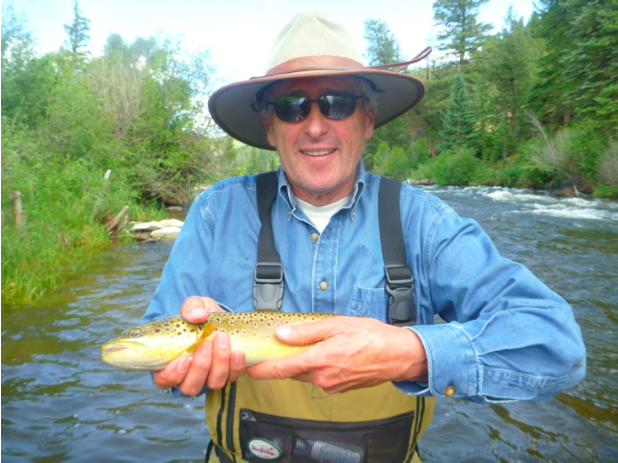 During this time, if you are patient and pay attention, you may see some larger fish slowly sipping these small bugs. If you do, watch carefully and try to present your fly exactly to the fish that you see rising. If you are not on target, there is a good chance that a smaller fish will grab your fly first and spook the bigger fish out of the pool.
During this time, if you are patient and pay attention, you may see some larger fish slowly sipping these small bugs. If you do, watch carefully and try to present your fly exactly to the fish that you see rising. If you are not on target, there is a good chance that a smaller fish will grab your fly first and spook the bigger fish out of the pool.
If you are lucky, the hatch will last until about 3:30 – 4:30, then things will slow down considerably. Post hatch, between 4:30 and 7 pm., is a good time to fish a heavy Dry/ Dropper rig in the deeper holes and look for a larger fish. During this post meal time, the fish react pretty slowly so takes can be very subtle.
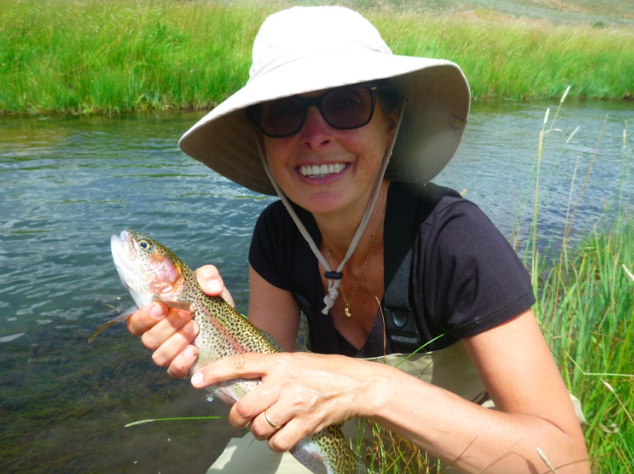 With any luck there will be some degree of a Caddis hatch from 7 til dark but recent hatches have not been consistent. Try skating a Caddis dry or fishing a large Moth type pattern as dusk approaches. If you find yourself on the river at dark, this is the time to try a large Mouse pattern over good holding water. Do not try to wade after dark, but fish carefully from the banks and skate your Mouse over the deeper holes.
With any luck there will be some degree of a Caddis hatch from 7 til dark but recent hatches have not been consistent. Try skating a Caddis dry or fishing a large Moth type pattern as dusk approaches. If you find yourself on the river at dark, this is the time to try a large Mouse pattern over good holding water. Do not try to wade after dark, but fish carefully from the banks and skate your Mouse over the deeper holes.
Even on slow days on the Taylor, some fish will always respond to a well presented Para Adams in almost any size. The key is a soft presentation on the water and a good drift. Yesterday we had a son of one of our owners catch 2 fish on the same cast with one eating the Adams and the other, the dropper.
If you find yourself out of the action on the River, try a large terrestrial such as a Hopper, Beetle or Ant pattern. Oftentimes a juicy meal such as this will entice a lazy fish into eating.
I look for slowly decreasing flows into September and increasing BWO and Mahogany Dun activity both on top and sub surface. As the water drops, fish become more spooky so remember your two best weapons as an angler: Stealth and Observation. Move slowly, look around and use a long leader to present your fly softly.
As flows drop, this is the time to search the deep holes for big fish that have remained out of site during the early season. If you spot a monster, take your time and figure out the best approach and rig to get your fly right in front of it’s face without spooking it.
With all of the thunderstorms and rain in July, the hay cutting in the meadow has gone slowly. At the moment Don and his crew are cutting the last of the hay along the Upper part of Rarick Creek. This is the best time to throw a Grasshopper pattern and big fish oftentimes forego all caution to eat a well presented Hopper. As always on Rarick Creek, your best bet is to start with a dry and see how it goes. If you do not have any action, then it may be time to try a small Pheasant tail dropper tied about 2 feet below your dry. Last week we hooked and landed an 8 lb rainbow in the Creek and several fish in the 20-24 inch range so make sure that here, you use larger tippets such as 3 and 4x.
If you try a variety of Hopper patterns without success it may be time to size down and try a smaller dry such as a #16 para Adams or BWO.
When you land one of the larger fish in the Creek, make sure that you take your time and revive the fish well before releasing it. Oftentimes it is best to carry the fish quickly up to faster water and hold him there in the current until he recovers. Once he swims away, keep your eye on him until you are sure he is ok. Oftentimes the fish will take off quickly and then turn belly up a moment later. If so, try to recapture the fish and revive him well.
As with all of our waters at Wilder, barbless hooks are required so please carefully check or de-barb each fly before you tie it on. Fish mortality rates increase dramatically with a barbed hook.
All of our 6 ponds are full of large Rainbows and Browns. We caught a Rainbow 2 weeks ago that was close to 10 lbs. While on the spooky side, these fish can be caught with a well presented dry or dry/dropper combo. There are still a few Damselflies around but mostly the fish there are looking for Hoppers. I like to throw the Hopper pattern well in front of a fish, twitch it a couple of times and see how he reacts. If he doesn’t eat it the first time, keep presenting your fly directly to the fish until he either swims away, spooks or eats it. I always like to try a fly on 2 or 3 different fish before I change patterns. Remember the basic rule: If what you’re doing isn’t working,change and try something else!
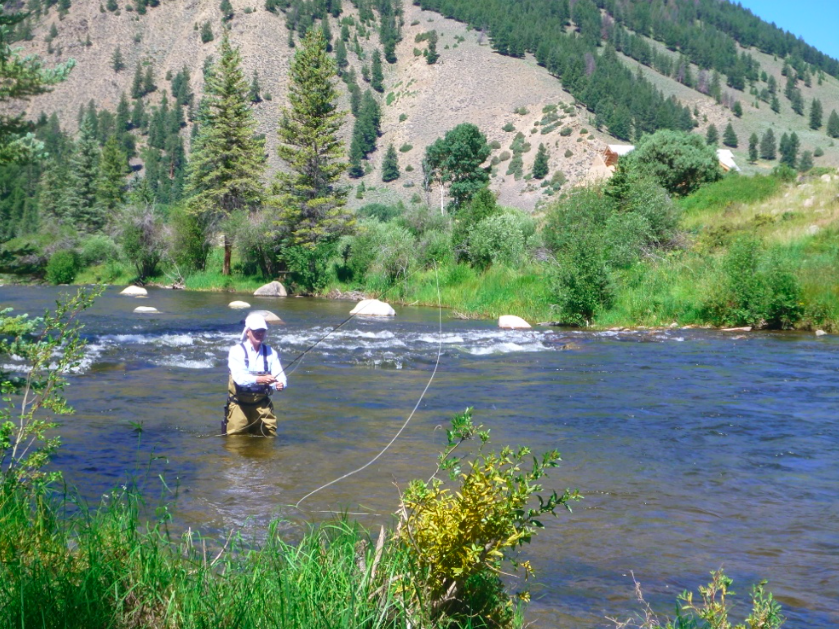
As with the stream, please take the time to revive your fish until he swims away strongly. With warm summer temperatures, oxygen content of the water drops and the fish have a hard time recovering after a lengthy battle. Try to play your fish quick and hard and bring him to the net as soon as possible to avoid over tiring him. After landing a fish, check your tippet by carefully running your fingers along it. If it feels rough and abraded, take the time to change the tippet as abraded tippets will likely break on your next hookup.
Despite it being the dog days of mid August, fishing is still excellent on all of our waters at Wilder. Hope you have a chance to get out there and enjoy it.
Please feel free to contact me directly for an up to the minute fly-fishing report or any questions that you may have. I can be reached at 970-946-4370.
Tight lines,
Lu
Wilder on the Taylor River offers a unique opportunity to own private fly-fishing property along with a beautiful riverfront home. Click the links to learn more.

